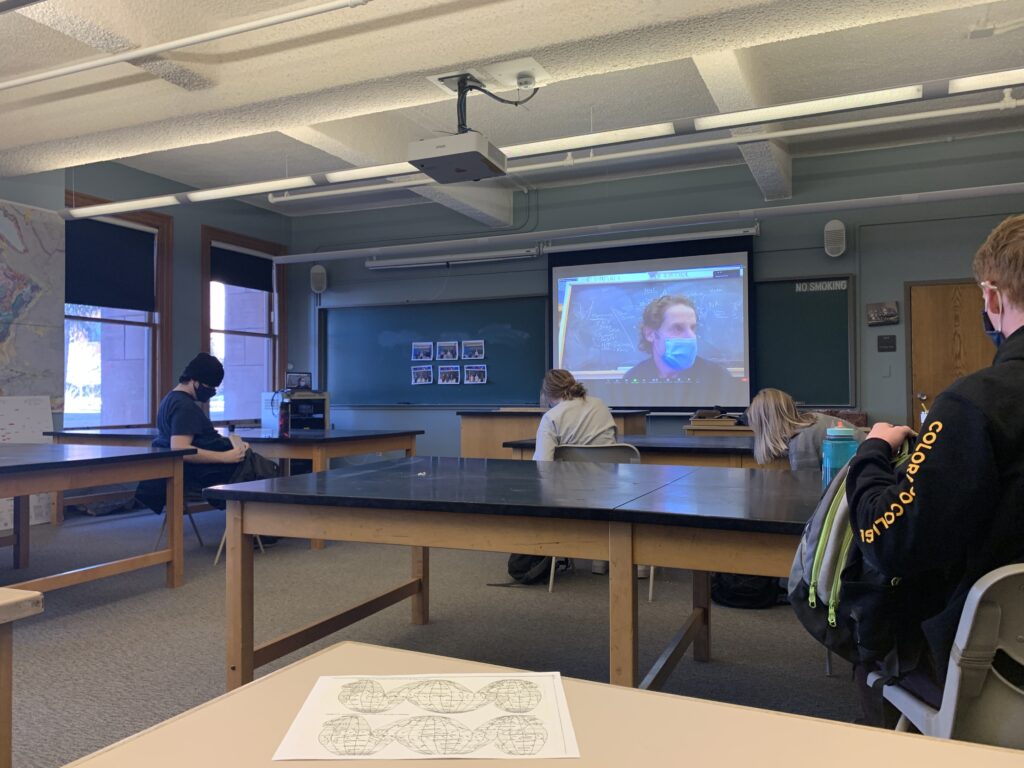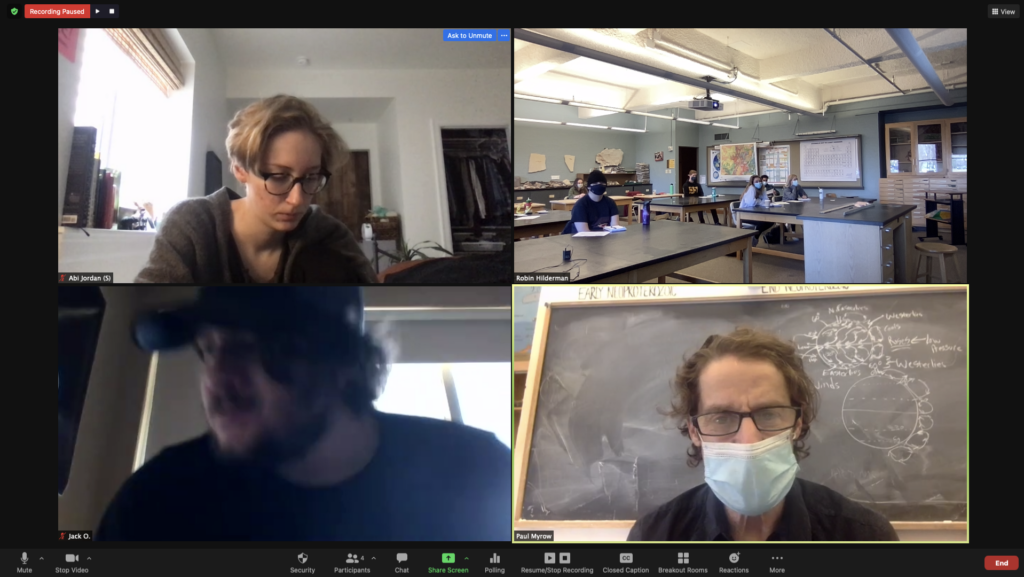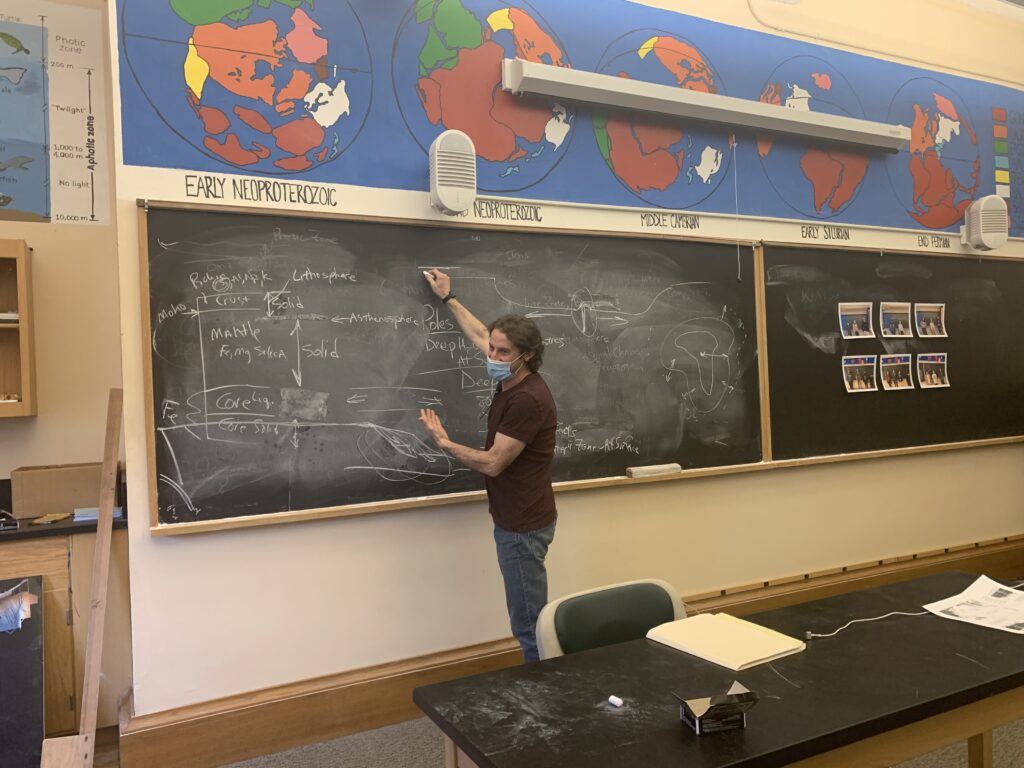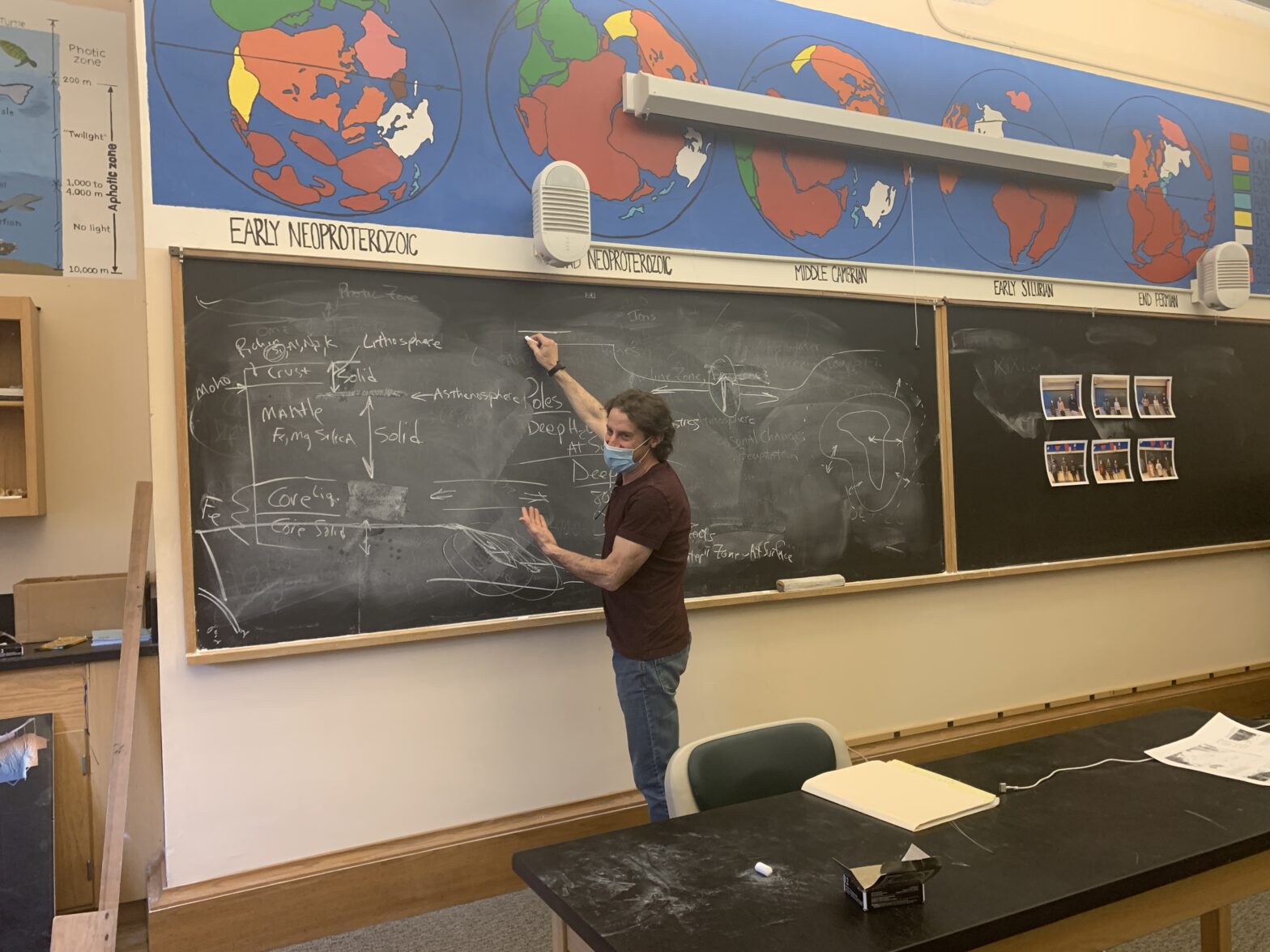Since I joined Paul’s Oceanography class so last minute, I had no time to process what an in-person class during the COVID-19 pandemic would look like. After I found the right classroom in Palmer, I claimed a desk at the back of the room, trying to make a quiet entrance as we began to review the syllabus. My peers, a small group all donning face masks, were spaced throughout the room, six or more feet apart, per Colorado College’s social distancing guidelines. At the front of the classroom was Paul—projected on a screen.

Though the setup initially confused me, I quickly realized that my class was split into three sections. One group in Paul’s classroom, one group in my classroom, and a few folks on Zoom. In room 19, Paul gave lectures by the chalkboard at the front. In room 16, Robin, a CC grad and paraprofessional in the geology department, monitored a setup where Paul was projected onto a screen at the front for us to view, and where a laptop logged into Zoom allowed Paul and the online students to view us. Each day we rotated classrooms, so that all of the in-person students had the opportunity to be in Paul’s classroom.

The structure of GY115: Oceanography seemed intimidating at first. All of my previous classes were online, as most classes have been at CC during COVID-19, and most had limited the number of hours spent on Zoom to avoid the dreaded Zoom fatigue. None of my classes were a daily 3-hour lecture. However, after the first lecture, which included a 10-minute break about halfway through, I started to understand how CC students normally do the Block Plan. The magic certainly is in the classroom, but the learning experience is all about your professor and your peers.
Paul brought incredible passion to his teaching, giving us detailed, enthusiastic answers to questions like: what is the Earth made of? What are tectonic plates and how do they move? How are oceans created? Can oceans disappear?! How do we know what’s under all that water?? What even is water??!?
Though this oceanography course was housed within the Geology department, it was certainly a more broad science class, requiring a general understanding of different science disciplines as opposed to an intense understanding of one field. Paul made no assumptions about any student’s prior science knowledge, encouraging a learning environment where no question was a stupid question. Each day involved digesting an abundance of new concepts at warp speed, as is characteristic of the block plan pace, though Paul was happy to pause his lecture at any time to address a question and further explain a concept. All of Paul’s lectures were fairly content heavy, but somehow he always had a story or joke to make the science come alive.

The most special aspect of this class was also the most nerve-wracking one—I was in a classroom with my peers! After months of limited social interaction and staring at strangers on my laptop screen, I was suddenly surrounded by people my age (socially distanced of course). In a typical year in college, opportunities to socialize are seemingly infinite and making friends comes easily. But during a pandemic, chances to safely interact with people in person are few and far between. For first-years, our entire introduction to CC was online, and activities such as the Priddy Trip which normally help foster a sense of community were cancelled. In fact, most first-years were sent home only a few weeks into the first semester due to concerns about COVID-19 and all-dorm quarantines, so most of us were not even on campus for the majority of our start to college. Though college during the pandemic has certainly been a challenge for all students, first-years have had an especially hard time.
Surely, it is possible to have some kind of connection with peers in Zoom classes, but I personally liken my experiences with Zoom to watching a somewhat interesting yet mentally exhausting television show. I stare and try to process what I am listening to but I get distracted easily and fatigued in no time. But in person, there are all the magical moments that Zoom cannot facilitate: reading body language, catching someone’s eye from across the room, having a private conversation during a break, sharing a look of confusion, adding someone to your contacts and making plans to study later. It’s little moments like these that happen inside a physical classroom that transform a class from an individual intellectual exploration to a collective curiosity voyage (I know this is SO cheesy but I think you’d feel the same in your first in-person class after months of solo online learning).
Stay tuned to hear more about learning with and from my lovely peers!

Great post, Veronica! Nice to read about how the in-person class experience has been for you!
I do miss in-person geology classes so much!